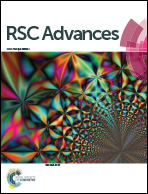Laser ablation of a bulk Cr target in liquids for nanoparticle synthesis
Abstract
Laser ablation of bulk target materials in liquids has been established as an alternative method for synthesis of nanoparticles with unique and novel properties. Ablation of single element targets can lead to the synthesis of compound nanoparticles due to the interaction of the ablation plasma plume species with the species which are produced by the liquid decomposition. The additional compression which the plasma plume experiences by the liquid may result in the formation of nanoparticles which are characterized by metastable material phases, difficult or impossible to be produced by other methods. In this work laser ablation of a bulk Cr target in DI water, ethanol, acetone or toluene was carried out for the production of nanoparticle colloidal solutions. Mostly spherical nanoparticles are obtained in all four liquids with sizes ranging from 2 nm and up to a progressively smaller maximum diameter of 120, 50, 30 and 23 nm from DI water to toluene. Their size distribution follows a log-normal function with a median diameter of 6.8, 11.2, 6.0 and 5.3 nm for the four liquids, respectively. Graphitic as well as amorphous carbon is found on the nanoparticles synthesized in the hydrocarbon liquids. Nanoparticles synthesized in DI water are a mixture of Cr3O4, Cr2O3 and CrO3, in ethanol they are a mixture of Cr3O4, Cr7C3 and of the metastable phase Cr3C2−x, while in acetone or toluene nanoparticles of the metastable phase Cr3C2−x are produced.


 Please wait while we load your content...
Please wait while we load your content...